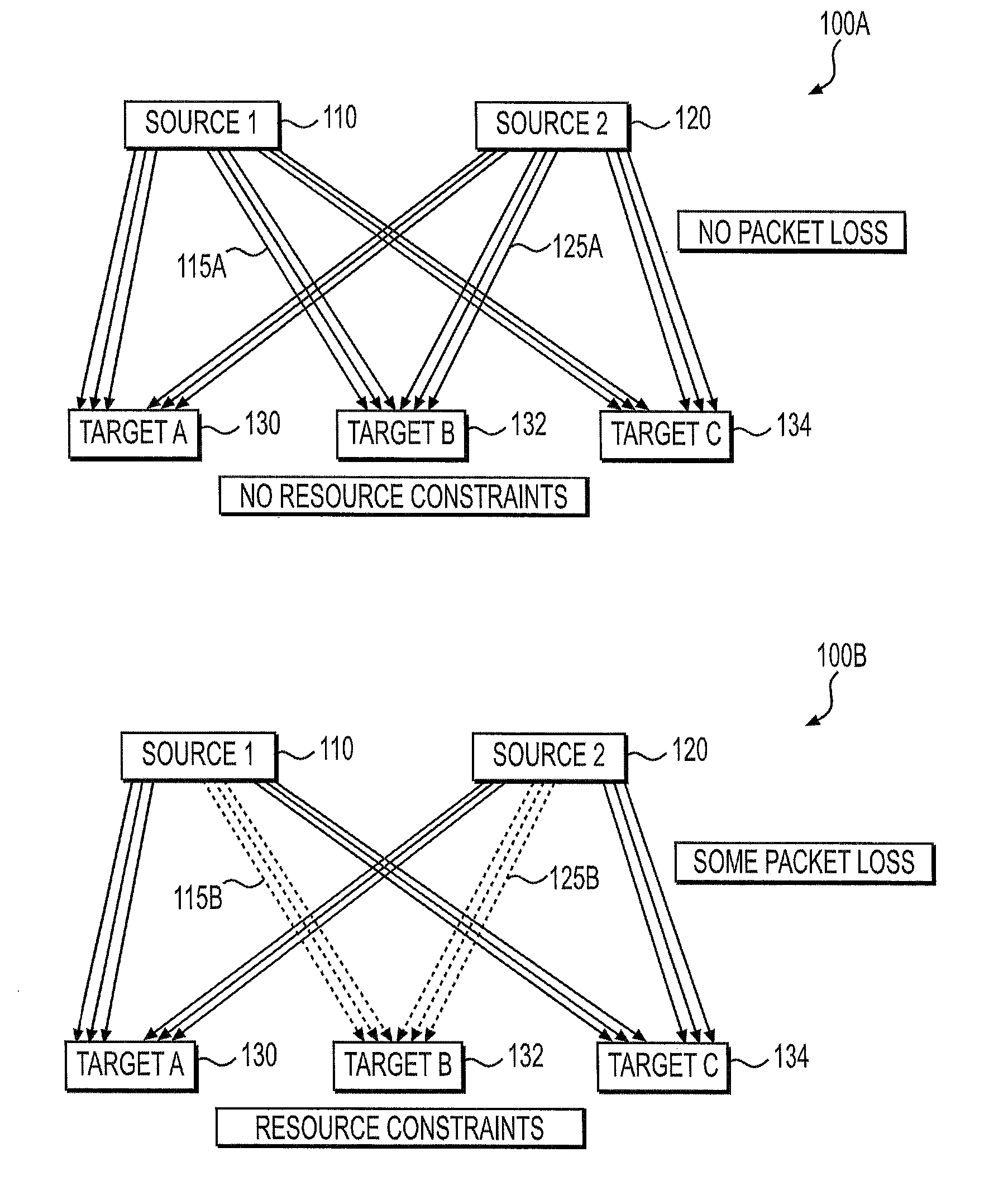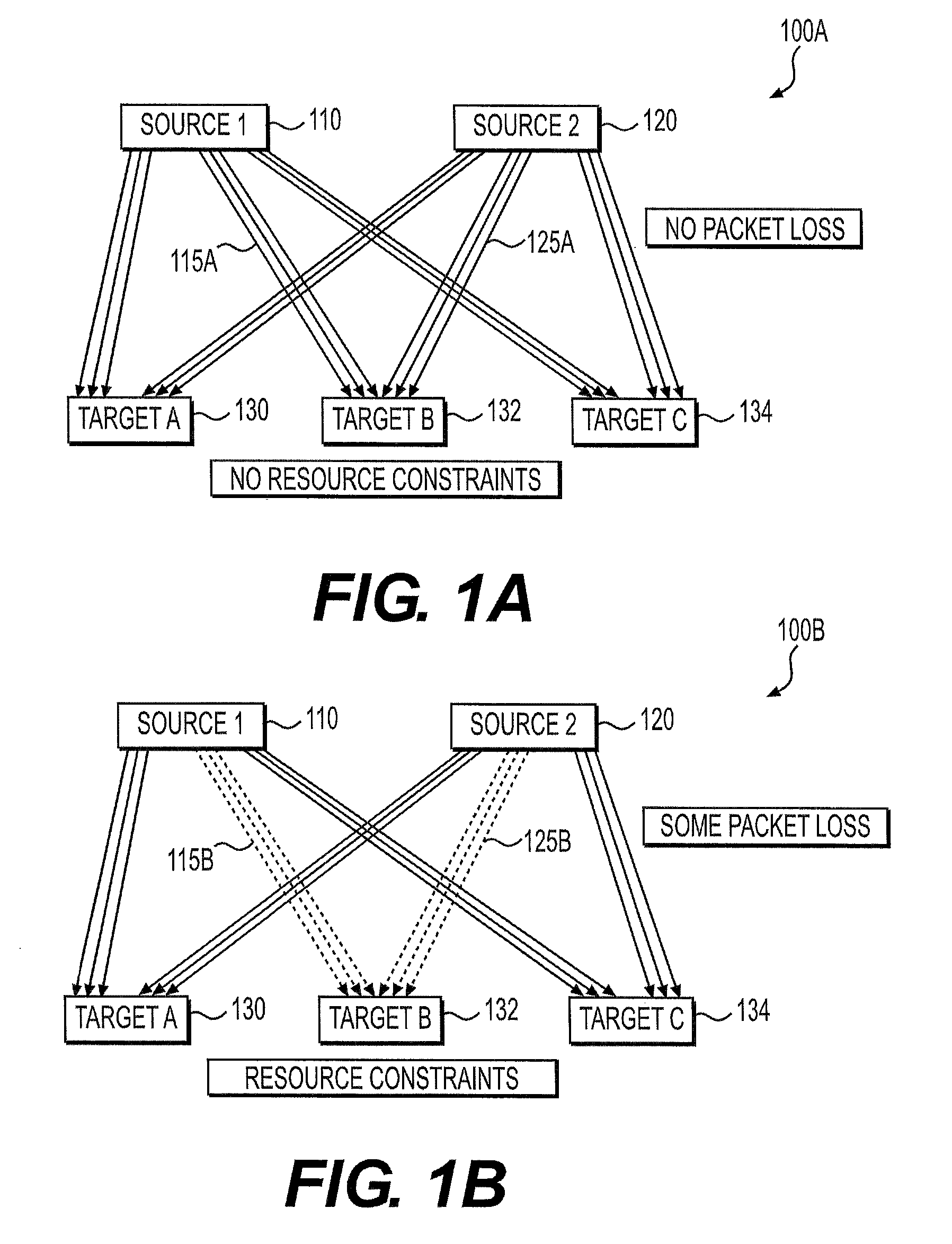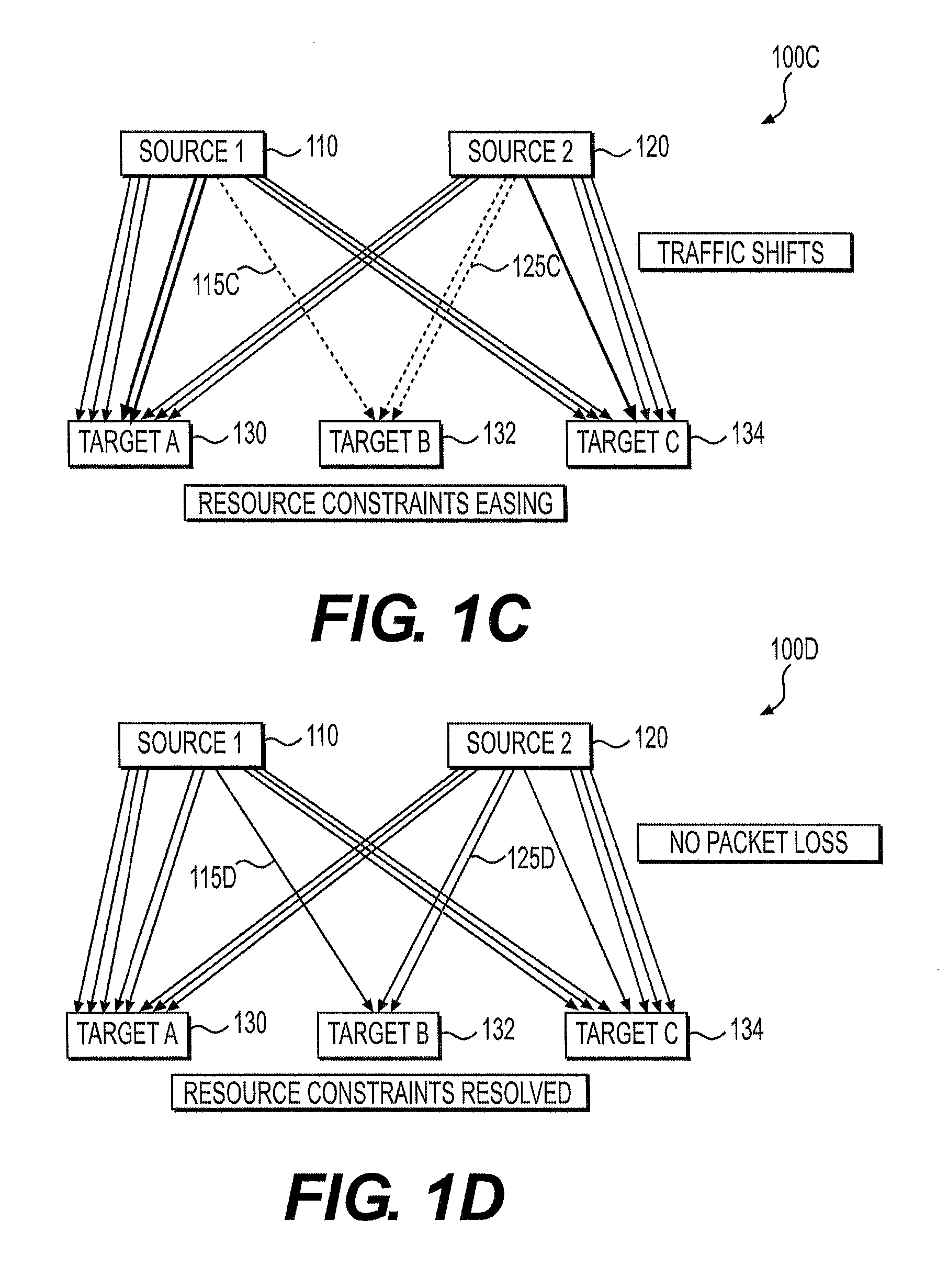Determining load state of remote systems using delay and packet loss rate
a remote system and load state technology, applied in the field of managing resource usage and workload allocation across a distributed computing system, can solve problems such as inaccurate measurements and scalability problems, server is unable to effectively handle its current workload, and the server within the system to reach an “unhealthy” load state, so as to reduce the load state of the first target device
- Summary
- Abstract
- Description
- Claims
- Application Information
AI Technical Summary
Benefits of technology
Problems solved by technology
Method used
Image
Examples
Embodiment Construction
[0022]The present disclosure is directed to overcoming one or more of the above referenced issues. Specifically, the present disclosure is directed to managing the distribution of workloads across multiple resources in a distributed computing system. In an example, the resources within such a distributed computing system may include a plurality of target devices that are used to process tasks or job requests initiated by a client of an application or service provided by the distributed computing system. The distributed computing system may also include one or more source devices (or “sources”) for distributing workloads and managing resource usage across the various target devices (or “targets”) within the system. The target devices may include, for example, different back-end servers of a data center or clustered computing system, and the source devices may be one or more load balancers within the system. However, it should be noted that target devices and source devices are not li...
PUM
 Login to View More
Login to View More Abstract
Description
Claims
Application Information
 Login to View More
Login to View More - R&D
- Intellectual Property
- Life Sciences
- Materials
- Tech Scout
- Unparalleled Data Quality
- Higher Quality Content
- 60% Fewer Hallucinations
Browse by: Latest US Patents, China's latest patents, Technical Efficacy Thesaurus, Application Domain, Technology Topic, Popular Technical Reports.
© 2025 PatSnap. All rights reserved.Legal|Privacy policy|Modern Slavery Act Transparency Statement|Sitemap|About US| Contact US: help@patsnap.com



